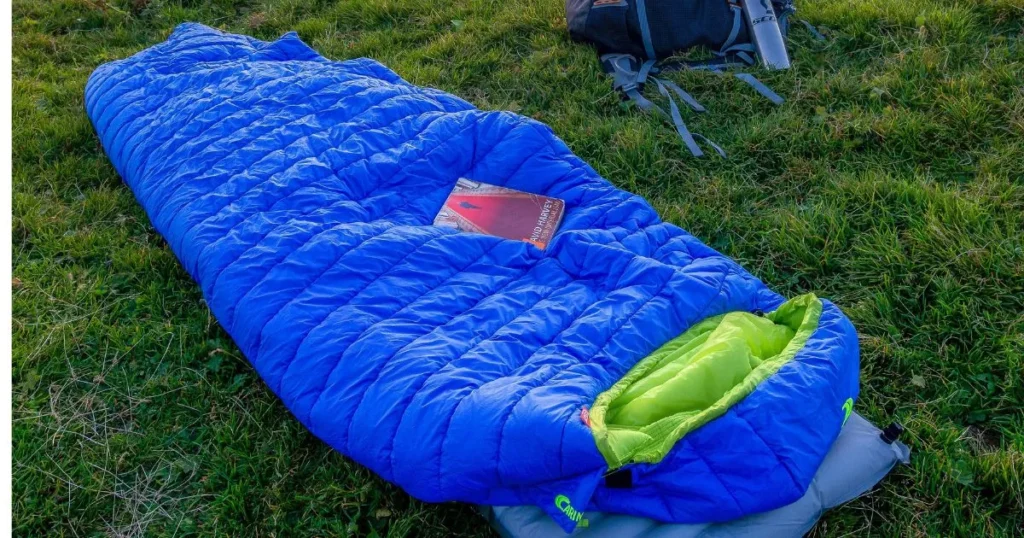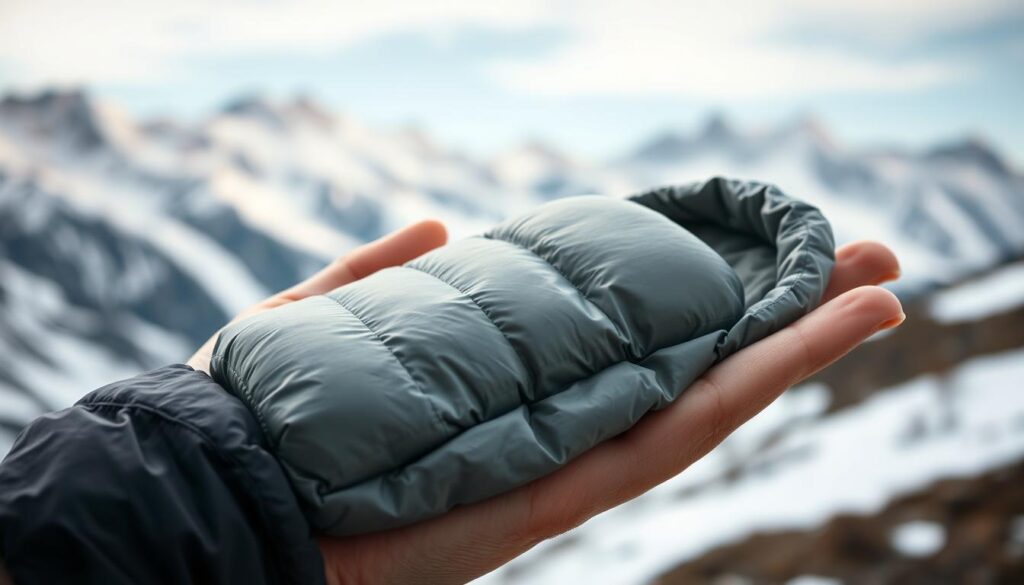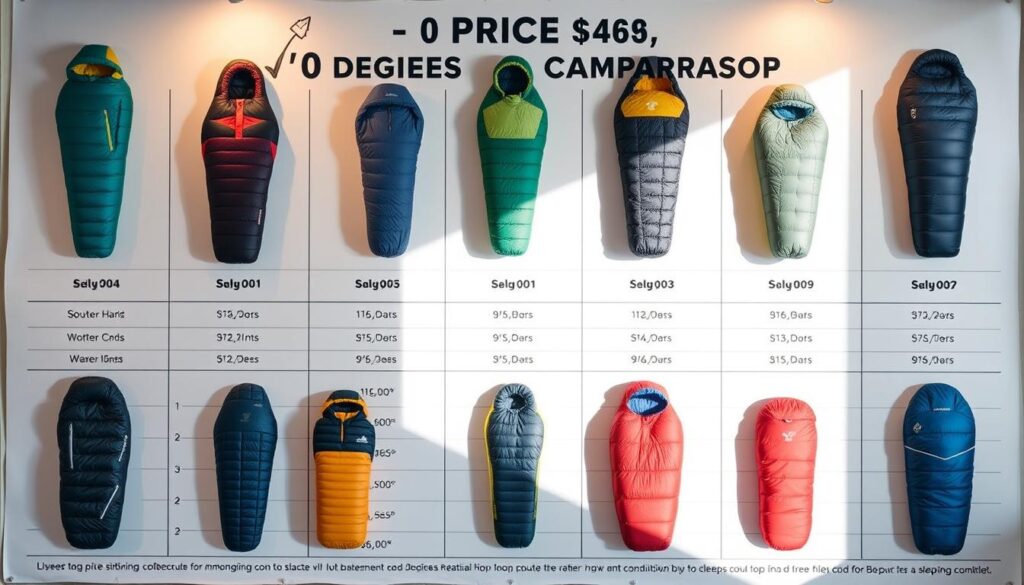Shop the Best 0-Degree Sleeping Bags for Ultimate Warmth in Extreme Cold Conditions
When winter hits hard, your survival depends on one key item: your sleeping bag. Every winter adventurer faces the scary moment of facing sub-zero temperatures without proper gear. A top-notch 0-degree sleeping bag is more than just equipment—it’s your lifeline in extreme cold.
Winter adventures require serious prep. Whether you’re a backcountry skier, alpine mountaineer, or winter camper, your sleeping bag is your main defense against cold. The right 0-degree sleeping bag gives you more than warmth—it gives you peace of mind when temperatures drop and survival is key.
Table of Contents
Understanding Temperature Ratings and Insulation Types
When picking a 0-degree sleeping bag, knowing about insulation and thermal ratings is key. The type of insulation you choose—down or synthetic—has a major impact on how comfortable you stay while camping in the cold.
Different insulation types have unique features that affect your warmth and safety in harsh conditions:
- Down insulation offers great warmth for its weight, perfect for light backpacking
- Synthetic insulation performs well even when damp, maintaining its ability to keep you warm in wet weather
- Thermal rating standards show how well a bag keeps you warm
Down vs Synthetic Fill Power Explained
Down insulation’s fill power shows its loft and how compact it is. Higher fill power means more warmth and less weight. Synthetic insulation, though heavier, works well in wet places.
ISO Rating Standards for Cold Weather Bags
Thermal ratings set by the International Organization for Standardization (ISO) assist you in selecting a sleeping bag that suits your specific outdoor conditions.
The Science Behind Warmth Retention
Keeping warm depends on insulation type, baffle design, and shell materials. Your sleeping bag must keep your body heat in to avoid hypothermia in cold trips.
Picking the correct insulation goes beyond comfort—it’s essential for staying safe in harsh environments.
Essential Features of Premium Cold Weather Sleeping Bags
Choosing the right cold weather sleeping gear is crucial. It could be the key to sleeping soundly versus spending the night shivering. Premium mummy bags are designed to keep you warm in the harshest conditions.
What makes a standard sleeping bag into top-notch camping gear? It’s all about the design:
- Mummy Design: Its shape traps heat and keeps cold air out
- Draft collars block cold air from getting in
- Water-resistant shells keep moisture out
- Reinforced footboxes add extra warmth
- Insulated hoods keep your head warm
Look for bags with advanced thermal mapping. This feature ensures your insulation stays in place. It keeps you warm all over, even in the coldest spots.
Professional adventurers know that quality camping gear isn’t just about survival—it’s about comfortable, safe exploration.
When you’re shopping for a winter sleeping bag, focus on features that make cold places cozy. The right mummy bag can be your shield against the cold.
Top Rated 0 Degree Sleeping Bag Models for 2024
When you’re heading into extreme cold, the right sleeping bag is key. These bags are the best for keeping you warm in winter adventures.

Choosing a top-notch sleeping bag means looking at a few important things. We’ve picked the best for warmth and reliability in tough weather.
Western Mountaineering Kodiak MF
Cold-weather enthusiasts often favor the Western Mountaineering Kodiak MF for its reliable warmth. It’s known for:
- Exceptional down fill power for maximum thermal efficiency
- Lightweight construction at approximately 3 pounds
- Water-resistant down treatment
- Precise temperature rating of 0 degrees Fahrenheit
Nemo Sonic -20
The Nemo Sonic -20 is built for the coldest conditions. It’s a must-have for backpacking with its:
- Innovative spoon-shaped design for enhanced comfort
- Waterproof footbox protection
- Advanced synthetic insulation
- Exceptional moisture management
Feathered Friends Snowbunting
In terms of sleeping bag technology, the Feathered Friends Snowbunting stands out as a leading option. It’s known for:
- Premium 900+ fill power down
- Incredibly lightweight construction
- Precision baffling for optimal heat retention
- Durable water-resistant exterior shell
These sleeping bags are great for winter camping and mountaineering. They offer reliable warmth in extreme cold.
Key Considerations for Extreme Weather Protection
Selecting the appropriate sleeping bag is crucial for handling severe weather conditions effectively. Your thermal rating is more than a number; it’s your safety net in cold weather.
Understanding the essential features can significantly enhance your experience in the great outdoors. Important factors include:
- Insulation quality and type
- Temperature rating accuracy
- Shell material durability
- Wind and moisture resistance
The best sleeping bag for extreme weather must have several key features. The thermal rating is especially important for staying warm in tough conditions.
| Protection Factor | Key Considerations | Impact on Performance |
|---|---|---|
| Insulation Type | Down vs Synthetic | Warmth retention in wet conditions |
| Shell Material | Ripstop nylon, DWR coating | Water and wind resistance |
| Draft Prevention | Insulated draft collar | Reduces heat loss |
When picking a sleeping bag, focus on comprehensive weather protection over single features. Your safety relies on a well-rounded approach to extreme weather gear.
Moisture Management and Weather Resistance
When you’re camping in cold weather, keeping dry is key. Your sleeping bag’s moisture resistance can make a big difference. It can turn a good night into a bad one.
Keeping your sleeping bag dry is a challenge. Modern bags use smart tech and design to stay warm and dry. They’re made to handle both outside and inside moisture.
Water-Resistant Shell Materials
Shell materials are important for keeping your gear dry. Top sleeping bags use special fabrics. These fabrics are water-resistant but still let you breathe.
- Choose ripstop nylon treated with a Durable Water Repellent (DWR) finish for added protection
- Polyester microfiber with hydrophobic treatments
- Lightweight yet robust waterproof membranes
Hydrophobic Down Treatments
Down loses its insulating power when it gets wet. Hydrophobic down treatments fix this by coating each down cluster. This keeps the down dry and warm.
- Prevents moisture absorption
- Maintains thermal efficiency
- Extends down’s performance in humid conditions
Ventilation Systems
Good ventilation is key for managing moisture inside. Modern sleeping bags have smart features. These help control temperature and cut down on moisture.
- Zippered vents for temperature control
- Breathable inner linings
- Draft collars to prevent heat loss
Knowing about these moisture management features helps you pick the right sleeping bag. This way, you stay comfortable even in the coldest weather.
Weight and Packability Factors

Choosing the right ultralight sleeping bag for winter adventures is key. Weight and how easy it packs are crucial. Every ounce counts when you’re hiking tough trails.
Today’s ultralight sleeping bags use advanced materials. They offer great warmth without being too heavy. Designers have found ways to make them small but still keep you warm.
- Down insulation provides maximum warmth-to-weight ratio
- Compressed fill power ensures minimal packed volume
- Lightweight shell materials reduce overall bag weight
What you need depends on your trip. Mountaineering expeditions need ultra-compact bags. But for base camp, you can choose something a bit bigger.
Think about these important packing points when picking your sleeping bag:
- Total weight (usually 2-3 pounds for 0-degree bags)
- Compressed size (try to keep it under 8-10 liters)
- How well it fits in its compression sack
Professional adventurers look for gear that’s light and performs well.
Modern sleeping bags are made to be warm and light. They’re designed to be easy to carry. Your ideal sleeping bag will be warm, light, and easy to pack.
Construction Quality and Durability Standards
When you buy extreme weather sleeping bags, knowing about construction quality is key. A sleeping bag’s toughness is a key factor in its long-term usability. It must stand up to harsh winter conditions and keep you warm.
Premium 0-degree sleeping bags show top-notch craftsmanship. They have design elements that ensure they last long and keep you warm.
Baffle Design and Stitching Precision
The baffle inside the sleeping bag is important for even heat. High-quality bags have special baffle designs. These designs stop insulation from moving and keep cold spots away.
- Vertical baffles for down sleeping bags
- Horizontal baffles for synthetic insulation
- Strategic stitching to minimize heat loss
Shell Material Durability
Choosing strong shell materials is key for extreme weather. Makers focus on fabrics that are light but also tough. These fabrics can handle wear and tear well.
| Material | Durability Rating | Water Resistance |
|---|---|---|
| Ripstop Nylon | High | Excellent |
| Polyester | Medium | Good |
| Nylon Taffeta | Low-Medium | Fair |
Zipper Systems and Draft Tube Protection
Draft tube designs and zipper systems are key to keeping cold air out. Look for zippers with reinforced tracks and insulated draft tubes. These create a strong thermal barrier.
Buying a well-made sleeping bag means you’ll stay warm and cozy on tough outdoor trips.
Comfort Features and Design Elements
Choosing the right cold weather sleeping bag is more than just staying warm. The design of a mummy bag can make a huge difference. It can turn your outdoor sleep into a cozy experience, even in harsh conditions.
Top cold weather sleeping bags have key features for comfort:
- Ergonomic hood designs that cradle your head
- Adjustable draft collars preventing cold air infiltration
- Strategically placed insulation zones
- Soft internal fabric materials
- Stretch panels allowing natural movement
The ergonomic hood is a key comfort feature. It keeps your head warm by wrapping around it like a cocoon. Cinch cords and moldable shapes fit your head perfectly, keeping wind out and heat in.
Modern mummy bags have new comfort tech. Stretch panels in the sides let you move freely. Soft fabrics inside feel great against your skin, making cold nights more comfortable.
Comfort in extreme conditions isn’t a luxury—it’s a survival necessity.
Your cold weather sleeping bag should feel like a second skin. It should move with you and keep you warm. A well-designed bag ensures restful sleep regardless of your location.
Price Range and Value Considerations
Choosing the right camping gear for winter is key. Knowing the prices of 0-degree sleeping bags is important. Your choice affects how comfortable you’ll be outdoors.

Comparing budget-friendly and high-end choices is essential
Sleeping bags for cold weather vary in price. Your decision depends on a few things:
- How often you go on winter adventures
- Consider your spending limit when making a selection
- Focus on the sleeping bag’s performance based on your requirements
The long-term value of a quality sleeping bag is worth considering
Investing in a top-tier sleeping bag can lead to savings over time. Premium camping gear usually has:
- Longer life
- Better at keeping you warm
- Latest insulation tech
Warranty Coverage
Top brands offer strong warranties. Keep this in mind during your purchasing decision.
| Price Range | Features | Average Warranty |
|---|---|---|
| $150-$300 | Basic insulation | 1-2 years |
| $300-$600 | Advanced materials | 3-5 years |
| $600+ | Professional-grade | Limited lifetime |
“The value of quality lasts far beyond the initial cost.” – Unknown Outdoor Enthusiast
Choosing the right sleeping bag is about finding the right balance. It’s about cost, performance, and what you need for winter adventures.
Size and Fit Guidelines for Cold Weather Bags
Selecting the correct size of mummy bag is vital for maintaining heat and comfort in cold conditions. A well-fitting sleeping bag can turn a bad night into a cozy one.
When picking camping gear for extreme cold, consider these sizing factors:
- Body length and height
- Shoulder and hip width
- Sleeping style (side, back, or stomach sleeper)
- Additional clothing layers
Most makers offer various sizes for different body types. Typically, sleeping bags come in three primary sizes:
- Regular: Best for individuals 5’6″ to 6′ tall
- Long: Ideal for people 6′ to 6’6″ tall
- Wide: Designed for broader-shouldered campers or those who prefer extra movement
When trying on a mummy bag, make sure you can move a bit. A close fit is essential for retaining body warmth. It should also let you move a little.
Pro tip: Always try on a sleeping bag with the layers you plan to wear during cold nights to ensure optimal comfort and warmth.
The right fit in your camping gear is crucial, especially in zero-degree temperatures. Proper insulation is key.
Care and Maintenance Tips
Maintaining your gear, especially 0-degree sleeping bags, is crucial for reliable performance. Proper care keeps your down or synthetic insulation working well. This helps keep you warm and extends your bag’s life.
Cleaning your sleeping bag needs special care. For down insulation bags, use a down cleaner. Here’s what to do:
- Wash in a front-loading machine on gentle cycle
- Use lukewarm water (never hot)
- Rinse thoroughly to remove all detergent
- Dry fully on low heat with tennis balls to regain loft and fluff
Synthetic insulation bags need a bit different care. They’re easier to handle but still need gentle treatment:
- Machine wash on gentle cycle
- Clean with a gentle, detergent-free soap for best results
- Either air dry or use a low-heat tumble dryer setting
Proper storage of your sleeping bag plays a vital role in its longevity and performance. Never store your bag compressed. Use a large, breathable storage sack. This lets the insulation keep its loft and prevents damage.
More tips for keeping your bag in good shape include:
- Inspect zippers and seams regularly
- Repair small tears immediately
- Store in a cool, dry place
- Let it air out after every use to avoid moisture accumulation
Following these maintenance steps ensures your sleeping bag stays dependable through countless winter outings.
Conclusion
Selecting the ideal 0-degree sleeping bag is essential for staying protected and warm during cold weather trips. Knowing about sleeping bag technology helps you pick the best gear for your safety.
When picking a sleeping bag for winter, look at insulation, moisture control, and build quality. A good 0 degree sleeping bag keeps you warm in freezing temps. Think about what you need, like weight, packability, and durability.
The right equipment is vital to staying comfortable when camping in the cold. Get a sleeping bag that’s both effective and light. Look at what different brands offer to find the best one for your adventures.
The right 0 degree sleeping bag is your defense against winter’s cold. Research, compare options, and select a bag that suits your preferences and requirements.
FAQ
How do down and synthetic insulations differ in 0-degree sleeping bags?
What’s the best way to understand sleeping bag temperature ratings?
Which features should I prioritize in a 0-degree sleeping bag?
What’s the proper way to maintain a 0-degree sleeping bag?
Are ultralight 0-degree sleeping bags effective?
What’s the importance of a proper fit in a cold weather sleeping bag?
What factors should guide my choice between down and synthetic insulation for winter trips?
Which characteristics are essential in the outer fabric of a sleeping bag?
Share Your Opinion & Experience
💬 Have you tried this idea or do you have better tips? Share them with us so other travelers can benefit.
There are no reviews yet. Be the first one to write one.

